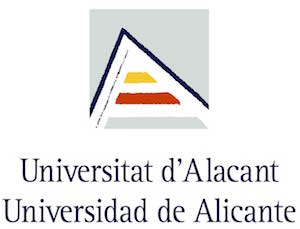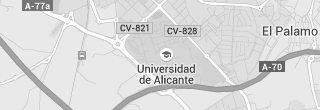TECHNOLOGY DESCRIPTION
The research group “Physics of condensed matter” of the University of Alicante has developed a new solid state laser (OSL) where the active compound comprises carbon-bridged oligo(p-phenylenevinylene) (COPV).
The main advantages of this technology are photostability, miscibility, processable in thin layers and effective for laser generation at different wavelengths. It can be used in the following industrial sectors: Spectroscopy, biosensors, chemical sensors and optical communications.
The research group is looking for companies interested in acquiring this invention or adapting it to their requirements.
COPVs are new organic dyes with which impediments like photostability, solubility, efficiency and processability in thin layers are largely eliminated, making them unique in many ways among known laser organic systems:
(i) a robust all-carbon skeleton is available here in a homologous series made of the repeating unit, which gives them high emission quantum yield close to unity over the broad range of visible light region (ca. 380–590 nm) as well as high stability against light irradiation and carrier injection,
(ii) a flat and rigid pi-system with strained bicyclo[3.3.0]octene substructure can be excited with low photoexcitation energy, and
(iii) substituents on the bridging carbon atoms and peripositions are available, which allow to equip them with miscibility and dispersibility in matrices.
The system developed comprises a laser device (solid body) containing carbon-bridged oligo(p-phenylenevinylene), COPV.
(See fact and figures related to Solid-state laser with COPV as active compound in document attached).
BENEFITS
MAIN ADVANTAGES OF THE TECHNOLOGY
The laser developed material shows the following advantages :
• Soluble and miscible in order to allow thin layer processing.
• Cheap.
• Photostable.
• Efficient for laser light generation.
• Ability for emission at different wavelengths.
INNOVATIVE ASPECTS
Same laser development combines:
• Efficiency
• Stability
• Wavelength tuning.
LIMITATIONS
N.A.
APPLICATIONS
• Spectroscopy
• Biosensors
• Chemical Sensors
• Optical Communications
Readiness Level (TRL)
 Patent Grading Report |
Patent Grading ReportThe Grading Patents Report evaluates and grades US patents Sample Buy from Wisdomain |
STATUS
Current status
PCT Application
AVAILABILITY
Available for
Licensing
INVENTOR / TEAM
Díaz García, Mª Ángeles






